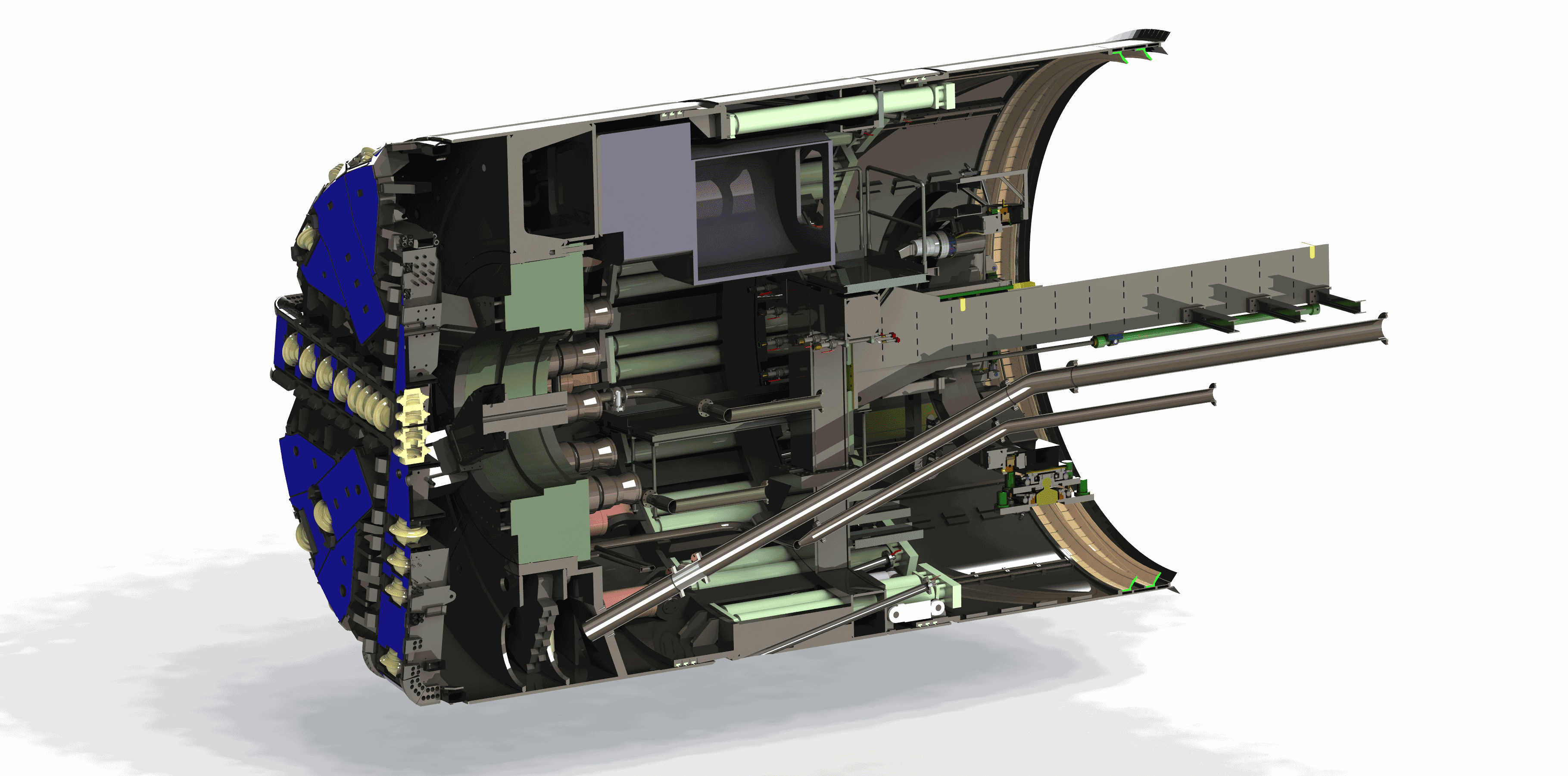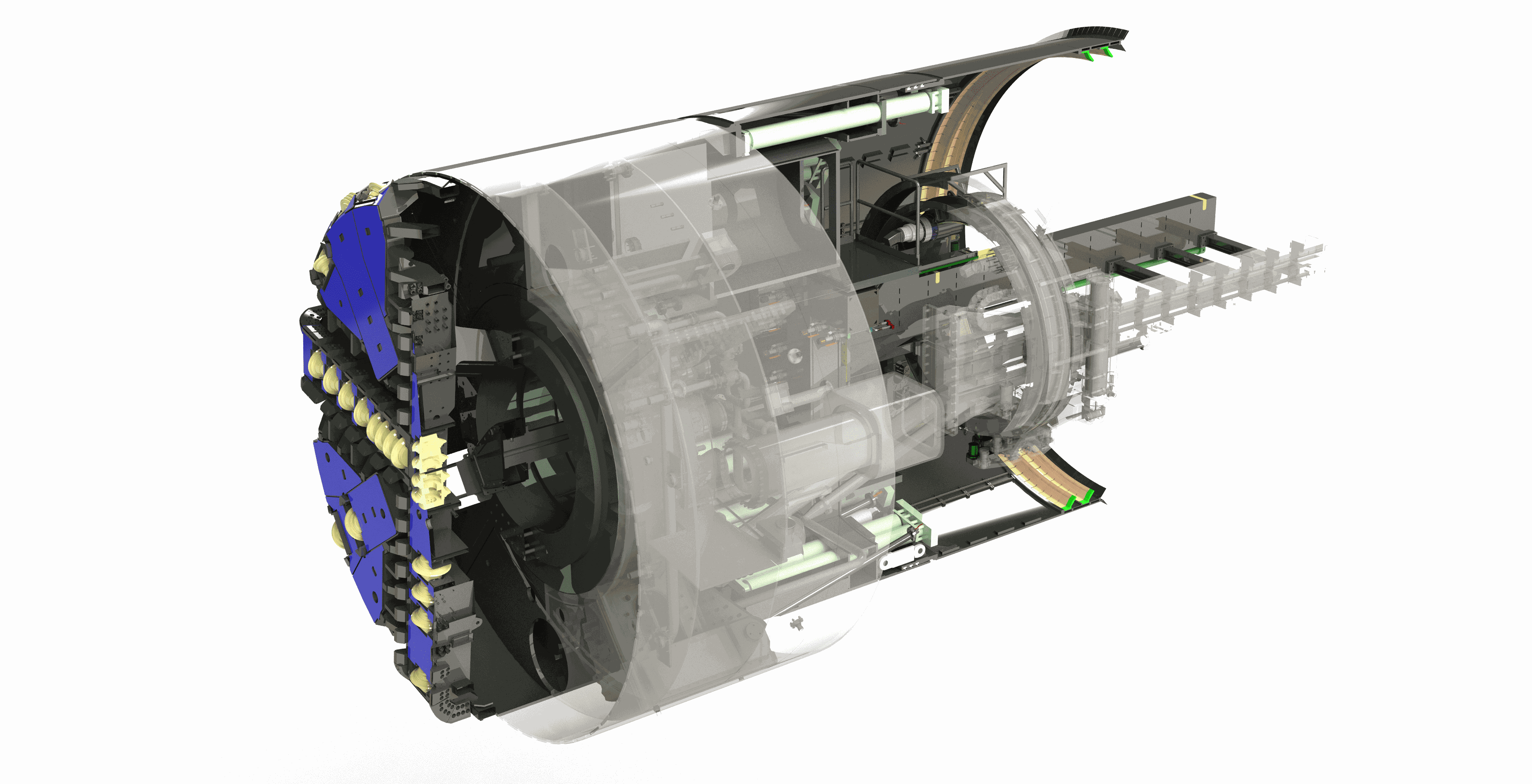Slurry tunneling machines have been developed for excavation in non-cohesive terrains that contain a low percentage of silts and clays.
The medium through which the unstable excavation fronts are supported during the advancement of a Slurry-type TBM is represented by a frictionless fluid, consisting mainly of water and additives (bentonite, natural clay, etc.) which creates a waterproof film over the entire front of the tunnel. In order to guarantee a complete and safe support of the excavation face, it is necessary to keep a constant transfer of pressure between the liquid film and the surface of the excavation face, since variations of this pressure would lead to inevitable collapses of the front.
The fluid descibed above is injected into the excavation chamber at a predetermined support pressure.
The material is extracted through centrifugal pumps that bring the excavated material to the Slurry separation plant on the surface.
During excavation, the density imbalances of the material inside the excavation chamber, generated by the continuous mixing between the injected fluid and the extracted excavation material, are counterbalanced by continuous pressure changes of the injected suspension, using compressed air, compensation valves or other methods.

